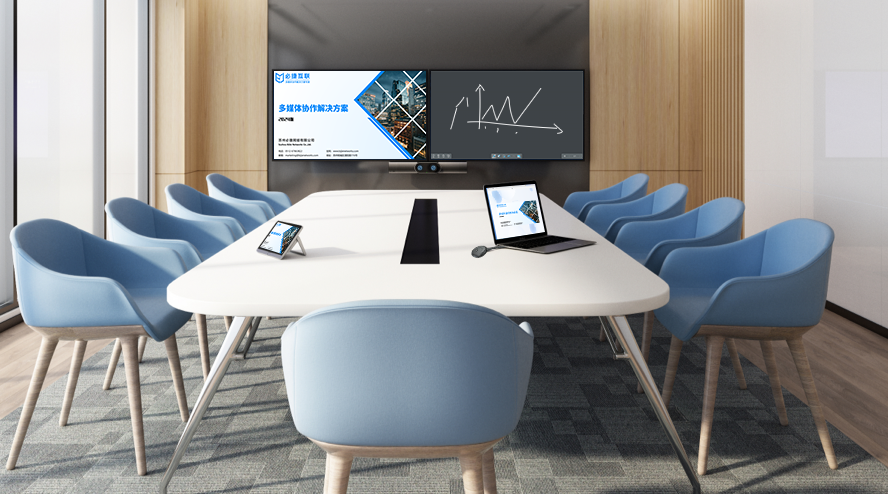Wireless Screen Mirroring SDK: Rapid Integration of Mirroring Capabilities
The Wireless Screen Mirroring SDK provides hardware manufacturers, software developers, and enterprise users with standardized screen mirroring technology modules. It supports quick embedding into apps, smart devices, and system platforms, is compatible with multiple protocols and terminals, and cost-effectively equips products with professional screen mirroring capabilities—meeting the needs of full scenarios such as office work, education, and entertainment.
Full Protocol Compatibility, Seamless Multi-Terminal Interconnection
It fully supports mainstream screen mirroring protocols including AirPlay, Miracast, DLNA, and WiDi, covering terminal devices such as Android/iOS mobile phones, Windows/macOS computers, tablets, smart TVs, conference screens, and projectors, with an adaptation rate of over 95%. There is no need to separately develop adaptation modules for different protocols; one-time integration enables cross-system and cross-brand device mirroring interconnection, easily breaking down device barriers.
At the same time, it supports custom protocol expansion, allowing the customization of transmission rules according to enterprises’ exclusive business needs to meet the application of differentiated scenarios.
Lightweight Integration, Doubled Development Efficiency
1. Ultra-Simple Integration Process
It provides development kits for multiple platforms including Android, iOS, Windows, and Linux, along with complete API documentation, Demo examples, and technical manuals. Developers do not need to conduct in-depth research on underlying screen mirroring technology—core functions such as “device discovery, connection pairing, content transmission, and permission management” can be quickly implemented by calling APIs.
- Basic integration for small projects can be completed in 1-2 days;
- Full-function implementation for medium-sized projects takes 3-5 days.
Compared with independent research and development, it saves more than 80% of development time and costs.
2. Flexible Customization Capabilities
- In-Depth UI Customization: The screen mirroring control entry (device list, resolution settings, connection button) can be seamlessly integrated with the original product interface to maintain consistent brand visuals.
- Modular Function Selection: Value-added functions such as “multi-device split-screen mirroring, real-time annotation, content capture, and remote control” can be integrated on demand, avoiding redundant development and reducing device resource consumption.
- Open Core Technical Interfaces: It supports secondary development and expansion to meet the needs of personalized business scenarios.
Stable Transmission, Native-Like Experience
1. HD & Low-Latency Performance
Adopting self-developed dynamic encoding and bandwidth adaptive technology, it supports 1080P full HD and 4K ultra-HD screen mirroring. It automatically adjusts image quality in weak network environments to ensure stable transmission.
- Transmission latency is as low as 20ms;
- Audio-video synchronization error is less than 10ms.
When playing dynamic videos or demonstrating PPTs, there is no trailing or lag, and the operation response is smooth—matching the experience of native screen mirroring functions.
2. Security & Anti-Interference Assurance
- Data Encryption: Built-in AES-256 data encryption transmission mechanism to prevent screen mirroring content from being stolen or tampered with.
- Device Authentication: Supports device authentication; whitelists and password verification can be set through the SDK, allowing only authorized devices to access.
- Anti-Interference Technology: Equipped with multi-channel intelligent switching technology, it automatically avoids congested WiFi frequency bands, reduces signal interference when multiple devices mirror simultaneously, and ensures stable and reliable screen mirroring.

Multi-Scenario Empowerment, Expanding Business Value
1. Smart Hardware Scenarios
- Hardware Manufacturers: Smart TV, conference screen, and projector manufacturers can quickly add screen mirroring functions by integrating the SDK without independent research and development—reducing product R&D costs and improving device added value and market competitiveness.
- In-Vehicle Scenarios: After integrating the SDK into in-vehicle screens, wireless mirroring of mobile navigation, music, and videos is realized, optimizing the driving and entertainment experience.
2. Software Application Scenarios
- Office Apps: Collaboration apps connected to the SDK can realize screen mirroring display of documents and meeting content. Combined with real-time annotation and multi-terminal synchronization functions, it improves team collaboration efficiency.
- Educational Apps: Educational software integrated with the SDK supports teachers’ courseware mirroring and students’ assignment display, creating interactive online and offline teaching scenarios.
- Entertainment Apps: Film, television, and game apps realize content mirroring through the SDK, enriching user usage scenarios and enhancing user stickiness.
3. Enterprise Customization Scenarios
- Enterprises integrate the SDK into internal management systems to realize mirroring interconnection between conference room large screens, office computers, and employees’ mobile phones, simplifying meeting processes.
- The retail industry builds in-store screen mirroring systems through the SDK; store staff use mobile phones to mirror product introductions and promotional activities, flexibly adjusting displayed content to improve marketing effects.
Full-Cycle Services, Worry-Free Cooperation
It provides 7×24-hour technical support, with real-time response to problems through online customer service, exclusive contact groups, and technical forums. The SDK version is updated regularly to optimize transmission performance, add new function modules, and adapt to new devices and system versions.
Two modes—local deployment and cloud service—are supported:
- Small enterprises can choose cloud services to reduce operation and maintenance costs;
- Large enterprises can ensure data privacy and security through local deployment.
The full cycle helps customers implement their business.
Whether hardware manufacturers want to add screen mirroring functions to their devices, or software developers hope to expand product application scenarios, this Wireless Screen Mirroring SDK can quickly equip products with professional screen mirroring capabilities with the advantages of “low cost, high efficiency, and strong adaptability”, helping business innovation and growth.
